Graph databases works well for path finding, especially with shortestPath as mentioned by FrobberOfBits.
This works well as long as you have nodes that can form a path. From what I understand in your comments, in fact you'll need to build these nodes dynamically first depending of the user driving preferences.
Also, apparently you don't have currently a data model for Point A to Point B ?
This is how I would proceed, briefly :
The use case is the Point A is my home and the point 2 is where live the Neo4j Community CareTaker, on a map it would be :

All the little white points in the route from A to B can be Neo4j nodes.
Now you say, that for e.g., there is an awesome girl with a driving preference of 50km in order to join the route, so the current route has to change.

As in your application, you do not force users to choose an intermediary point, you will have to create it on the fly.
So my quick solution, is to get the point on the radius that will be the closest to the destination point of the initial route.
To achieve it, first you'll need the initial bearing from the current position of the girl to the destination (here Dresden)
Where lat1 and lon1 are the position of the girl, and lat2, lon2 the position of Dresden
Then, given this initial bearing you can calculate the position starting from the girl in the bearing bearing and 50 kms distance for e.g.
In PHP it would look like (tested) :
// Function that calculate new coordinates from point A
// Given a bearing and a distance to point B
function getAwayPosition($lat1, $lon1, $lat2, $lon2, $distance)
{
// Getting true course from point A to point B
$la1 = deg2rad($lat1);
$la2 = deg2rad($lat2);
$lo1 = deg2rad($lon1);
$lo2 = deg2rad($lon2);
$y = sin($la2-$la1)*cos($lo1);
$x = cos($lo1*sin($lo2))-sin($lo1)*cos($lo2)*cos($la2-$la1);
$course = fmod(rad2deg(atan2($y, $x)+360), 360);
// Getting the new lat/lon points from lat1/lon1 given the course and the distance
$bearing = deg2rad($course); //back to radians for the coordinates calculation
$laa = asin(sin($la1 * cos($distance/6371 + $la1 * cos($course))));
$loo = $lo1 + atan2(sin($bearing) * sin($distance/6371) * cos($la1), cos($distance/6371) - sin($la1) * sin($laa));
return array(
'lat' => rad2deg($laa),
'lon' => rad2deg($loo),
'bearing' => $course
);
}
NB: There is also the haversin function in Cypher for calculating earth distances, I didn't play that much with it though
So, you can add a node that would represent the desired position for the girl in order to join the trip.
So far, we have now 3 good nodes for Neo4j :

Now I think it would be up to your data model for the rest of the process, if the route from A to B don't form already Neo4j nodes in your database, you can build it dynamically by calculating the distance from all the points with Google Maps API and set is as relationship property.
Then you can do a Cypher shortestPath and reduce on the relationship distance property.
If you have already nodes representing multiple intermediate points of the initial route from A to B, you can use Neo4j Spatial and get the closest point from the desired position of the girl to the intermediate nodes of the route and create a relationship with the distance.
And again shortestPath for the best mapped route.
The second solution would be better, because you will immediately have a graph to play with :

And a simple Cypher query if you want to get the path with the least kilometers :
MATCH (a:Point {id:'A'}), (b:Point {id:'B'})
MATCH p=allShortestPaths((a)-[:NEXT_POINT]-(b))
RETURN p, reduce(totalKm = 0, x in relationships(p)| totalKm + x.kilometers) as distance
ORDER BY distance ASC
There is also the Djikstra algorithm with cost properties available with the Neo4j ReST API http://neo4j.com/docs/stable/rest-api-graph-algos.html
Some resources :
So as a conclusion, if you want to use Neo4j for determining the best
route, you'll need to help him with some data in the database ;-)



